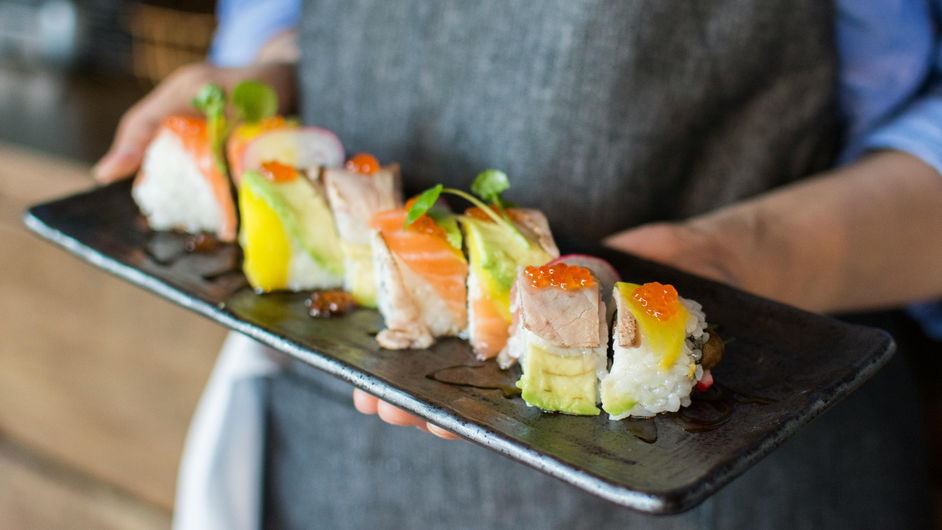3-minute read ---
Running a restaurant is a thrilling venture, filled with creativity, passion, and of course, delicious food. However, amidst the excitement, a critical aspect that often requires meticulous attention is managing restaurant food costs. Effective management of restaurant food costs is essential for maintaining profitability and ensuring long-term success, but it doesn’t have to be labor intensive.
Here are proven tips to help restaurateurs navigate the intricacies of controlling food costs without compromising on quality or customer satisfaction.
Here are proven tips to help restaurateurs navigate the intricacies of controlling food costs without compromising on quality or customer satisfaction.
Conduct Regular “At A Glance” Menu Analysis
Begin by analyzing your menu items in your cloud back-office reports. Identify which dishes are top sellers, which ones have the highest food costs, and which are underperforming. Consider tweaking portion sizes, substituting ingredients with more cost-effective alternatives, or even eliminating poorly performing items altogether. Continuously updating and optimizing your menu based on these analyses can significantly improve your bottom line.
Begin by analyzing your menu items in your cloud back-office reports. Identify which dishes are top sellers, which ones have the highest food costs, and which are underperforming. Consider tweaking portion sizes, substituting ingredients with more cost-effective alternatives, or even eliminating poorly performing items altogether. Continuously updating and optimizing your menu based on these analyses can significantly improve your bottom line.
Establish Relationships with Suppliers
Cultivating strong relationships with your suppliers help operators secure competitive pricing and reliable delivery schedules. Negotiate contracts for bulk purchases whenever possible, and explore the option of creating unique partnerships with local farmers or producers for fresh, seasonal ingredients. Additionally, work to stay informed about market trends and pricing fluctuations to capitalize on cost-saving opportunities.
Cultivating strong relationships with your suppliers help operators secure competitive pricing and reliable delivery schedules. Negotiate contracts for bulk purchases whenever possible, and explore the option of creating unique partnerships with local farmers or producers for fresh, seasonal ingredients. Additionally, work to stay informed about market trends and pricing fluctuations to capitalize on cost-saving opportunities.
Implement Inventory Management Systems
Utilizing inventory management software can streamline the tracking of stock levels, minimize waste, and prevent over-ordering. Regularly monitor inventory turnover rates and adjust ordering quantities accordingly to reduce the risk of spoilage or items going out of date. Moreover, establish strict protocols for receiving and storing perishable items to maintain their quality and freshness.
Train Staff on Cost-Conscious Practices
Educate your kitchen and serving staff on the importance of minimizing food waste and adhering to portion control guidelines. Support these efforts with a digital Kitchen Display System (KDS) that integrates with your point-of-sale and inventory data. Encourage staff to practice precision in ingredient measurements, utilize trimmings and scraps creatively, and promptly report any discrepancies or spoilage. By fostering a culture of cost consciousness throughout your team, you can significantly impact your restaurant's profitability.
Educate your kitchen and serving staff on the importance of minimizing food waste and adhering to portion control guidelines. Support these efforts with a digital Kitchen Display System (KDS) that integrates with your point-of-sale and inventory data. Encourage staff to practice precision in ingredient measurements, utilize trimmings and scraps creatively, and promptly report any discrepancies or spoilage. By fostering a culture of cost consciousness throughout your team, you can significantly impact your restaurant's profitability.
Monitor and Analyze Food Waste
Track and analyze food waste patterns regularly to identify areas for improvement. Implement strategies such as composting organic waste, repurposing excess ingredients into staff meals or specials, and donating excess food to local charities.
Track and analyze food waste patterns regularly to identify areas for improvement. Implement strategies such as composting organic waste, repurposing excess ingredients into staff meals or specials, and donating excess food to local charities.
Price Menu Items Strategically
Set menu prices that not only cover food costs but also account for overhead expenses, labor costs, and desired profit margins. Conduct regular price comparisons with competitors to ensure your pricing remains competitive while still reflecting the value of your offerings. Moreover, consider implementing dynamic pricing strategies based on demand fluctuations or seasonal variations.
Continuously Seek Efficiency Improvements
Regularly evaluate kitchen workflows and processes to identify opportunities for streamlining operations and reducing costs. Easily set up multiple printers and/or a digital Kitchen Display System (KDS) to help organize and optimize each workstation and enhance overall kitchen efficiency. Encourage feedback from your staff and remain open to innovative ideas for improving productivity and cost-effectiveness.
Regularly evaluate kitchen workflows and processes to identify opportunities for streamlining operations and reducing costs. Easily set up multiple printers and/or a digital Kitchen Display System (KDS) to help organize and optimize each workstation and enhance overall kitchen efficiency. Encourage feedback from your staff and remain open to innovative ideas for improving productivity and cost-effectiveness.
Manage Prices with the Aldelo Express Inventory Module and Advanced Pricing Module
Effectively managing food costs is a fundamental aspect of running a successful restaurant business. By implementing these tips and adopting a proactive approach to cost control, restaurateurs can optimize their operations, enhance profitability, and ensure sustainable growth in an increasingly competitive industry. Remember, every dollar saved on food costs is a step closer to culinary excellence and financial prosperity.
Aldelo Express offers a seamless, intuitive platform that offers real-time inventory tracking that helps restaurants reduce waste and avoid overstocking, and an advanced pricing module for easy price changes for in-store and online menus.
Learn more by contacting an Aldelo representative today at [email protected] or 925-621-2410
Effectively managing food costs is a fundamental aspect of running a successful restaurant business. By implementing these tips and adopting a proactive approach to cost control, restaurateurs can optimize their operations, enhance profitability, and ensure sustainable growth in an increasingly competitive industry. Remember, every dollar saved on food costs is a step closer to culinary excellence and financial prosperity.
Aldelo Express offers a seamless, intuitive platform that offers real-time inventory tracking that helps restaurants reduce waste and avoid overstocking, and an advanced pricing module for easy price changes for in-store and online menus.
Learn more by contacting an Aldelo representative today at [email protected] or 925-621-2410
|
Restaurants that use ultra-competitive Aldelo Pay or Aldelo Partner Merchant Services obtain access to a Centralized Multi-Store Restaurant Technology Platform that includes Masa+ Online Ordering, Unlimited Software Releases, Unlimited Software Upgrades, and 24/7 Technical Support! *** Please contact an Aldelo representative today for more details, including a free Aldelo Express POS demo trial [email protected] | 877-639-8767 | [email protected] |
|
Learn More About Aldelo Express and Masa+ ...
|
How to Prepare for Summer Crowds
in Your Restaurant Make a Splash with Your Summer Restaurant Services Using These Tips 3-minute read ---
Preparing for the summer crowds in your restaurant requires a strategic approach that focuses on efficient operations, customer satisfaction, and maximizing profits. The summer season often brings an influx of tourists and locals looking to dine out, making it a potentially lucrative period for your establishment. Here are some tips to help you get ready for the busy summer season: |
Seize the Season: Boost Your Dining Services with the Summer Olympics Buzz!
Promote Your Olympic Spirit to Get Ahead in the Race for Summer Customers 3-minute read ---
The Summer Olympics are not just a global sporting event; they are a season of excitement, unity, and celebration. The world is already gearing up for this spectacular event, meaning now is an opportune moment for restaurants and food service businesses, both in-house and remote, to capitalize on the heightened public interest, generate excitement, and encourage purchases from their restaurant! |



